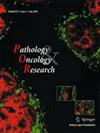基于venetoclax的复发/难治性多发性骨髓瘤易位患者的有效治疗(6;14)
IF 2.3
4区 医学
Q3 ONCOLOGY
引用次数: 0
摘要
选择性Bcl-2抑制剂venetoclax在多发性骨髓瘤中显示出良好的治疗潜力,特别是与t(11;14) IGH::CCND1易位相关的病例。然而,venetoclax对t(6;14) IGH::CCND3易位骨髓瘤患者的疗效研究仍然较少。方法:在本研究中,我们回顾性分析以venetoclax为基础治疗复发/难治性骨髓瘤t(6;14)易位患者的疗效。对三名患者的治疗过程进行评估,包括既往治疗和对venetoclax的反应。分析临床资料、实验室结果和不良事件以评估治疗结果。结果:我们的研究结果显示,连续3例接受venetoclax为基础治疗的t(6;14)易位相关骨髓瘤患者的治疗效果显著。患者1是来那度胺-硼替佐米-达拉单抗和烷化剂治疗的难治性患者,在卡非佐米-地塞米松联合venetoclax后获得了持续严格的完全缓解(sCR),这是他迄今为止的最佳反应。同样,患者2对一线硼替佐米-沙利度胺-地塞米松治疗难治性,在过渡到硼替佐米-地塞米松-维托克拉治疗后达到CR。患者3,免疫调节(IMID)不耐受,在自体干细胞移植后首次复发后,对venetoclax-地塞米松治疗表现出高度有利的反应。在所有患者中均未观察到明显的不良反应。讨论:我们的研究为venetoclax治疗t(6;14)易位相关性骨髓瘤的疗效提供了令人信服的初步证据。在我们的患者中观察到的结果表明,基于venetoclax的治疗对于这种特定的遗传亚群来说是一种有效的治疗选择。此外,t(11;14)和t(6;14)易位亚组之间治疗反应的相似性突出了针对特定遗传异常的个性化方法对优化治疗结果的重要性。本文章由计算机程序翻译,如有差异,请以英文原文为准。
Effective venetoclax-based treatment in relapsed/refractory multiple myeloma patients with translocation t(6;14)
Introduction : The selective Bcl-2 inhibitor venetoclax has shown promising therapeutic potential in multiple myeloma, particularly in cases associated with t(11;14) IGH::CCND1 translocation. However, the efficacy of venetoclax in myeloma patients with the t(6;14) IGH::CCND3 translocation remains less investigated. Methods: In this study, we conducted a retrospective analysis to investigate the efficacy of venetoclax-based therapy in relapsed/refractory myeloma patients with t(6;14) translocation. The treatment courses of three patients, that included previous therapies and responses to venetoclax, were assessed. Clinical data, laboratory results, and adverse events were analyzed to evaluate treatment outcomes. Results: Our findings demonstrated remarkable therapeutic responses in three consecutive patients with t(6;14) translocation-associated myeloma who received venetoclax-based therapy. Patient 1, a lenalidomide-bortezomib-daratumumab and alkylator treatment refractory patient, achieved sustained stringent complete remission (sCR) after combining carfilzomib-dexamethasone with venetoclax, which was his best response ever. Similarly, Patient 2, refractory to frontline bortezomib-thalidomide-dexamethasone therapy, attained CR following a transition to bortezomib-dexamethason-venetoclax treatment. Patient 3, who was immunomodulatory (IMID)-intolerant, showed a highly favorable response to venetoclax-dexamethasone therapy after his first relapse following autologous stem cell transplantation. No significant adverse effects were observed in any of the patients. Discussion: Our study provides compelling preliminary evidence for the efficacy of venetoclax in t(6;14) translocation-associated myeloma. The outcomes observed in our patients suggest that venetoclax-based therapy holds substantial promise as an effective treatment option for this specific genetic subgroup. Furthermore, the similarities in treatment response between t(11;14) and t(6;14) translocation subgroups highlight the importance of personalized approaches targeting specific genetic abnormalities to optimize therapeutic outcomes.
求助全文
通过发布文献求助,成功后即可免费获取论文全文。
去求助
来源期刊
CiteScore
6.30
自引率
0.00%
发文量
134
审稿时长
4-8 weeks
期刊介绍:
Pathology & Oncology Research (POR) is an interdisciplinary Journal at the interface of pathology and oncology including the preclinical and translational research, diagnostics and therapy. Furthermore, POR is an international forum for the rapid communication of reviews, original research, critical and topical reports with excellence and novelty. Published quarterly, POR is dedicated to keeping scientists informed of developments on the selected biomedical fields bridging the gap between basic research and clinical medicine. It is a special aim for POR to promote pathological and oncological publishing activity of colleagues in the Central and East European region. The journal will be of interest to pathologists, and a broad range of experimental and clinical oncologists, and related experts. POR is supported by an acknowledged international advisory board and the Arányi Fundation for modern pathology.

 求助内容:
求助内容: 应助结果提醒方式:
应助结果提醒方式:


